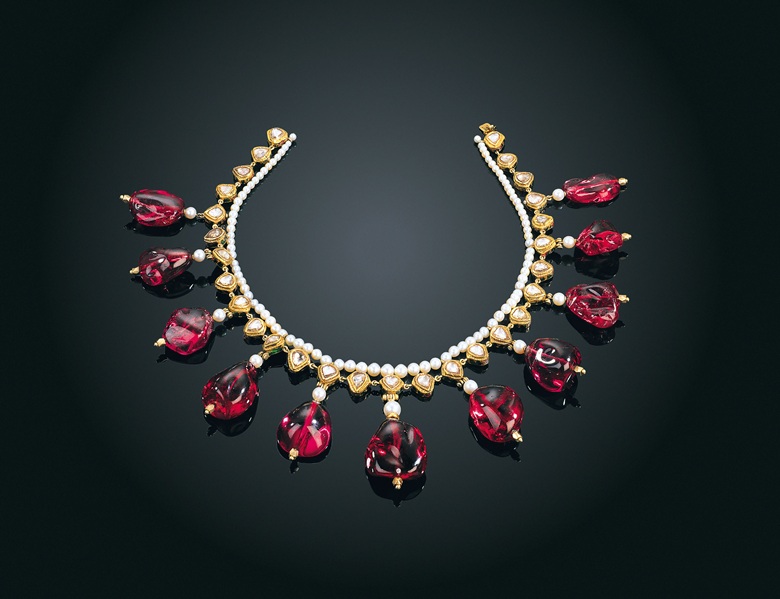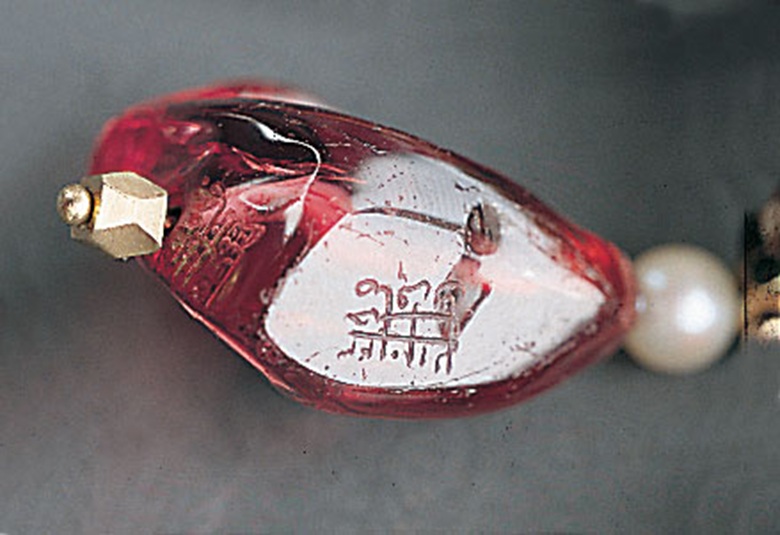
3: Spinel necklace: Adorned with beads engraved by three Mughal emperors
In October 1997 Christie’s in London produced a special themed sale of Important Indian Jewellery to celebrate the 50th anniversary of Indian Independence. This landmark sale captured the imagination, putting a focus on these wonderfully luxuriant traditional Indian designs.

The sale featured more than 100 lots of jewellery and gem-set objects from the 17th to the 20th centuries. The Mughal emperors reigned over northern and central India for 332 years — a period that is still a byword for artistic achievement.
Spinels were among the most highly prized gemstones, and the emperors had their names and hieratic titles engraved into them as a way of cementing their immortality. Larger than rubies and with a tone that varied from ruby-red to very light pink, spinels were usually worn as beads rather than as faceted gems.

The Mughal treasury was looted and subsequently dispersed by Persian ruler Nadir Shah in 1739, and very few necklaces survived. The example offered in 1997 was composed of 11 spinel beads, for a total weight of 877.23 carats, and three of the beads were engraved with the names of three of the most famous Mughal emperors: Akbar, Jehangir and Shah Jahan. The necklace sold for £881,500 ($1,428,030).
Content courtesy: Christie’s
